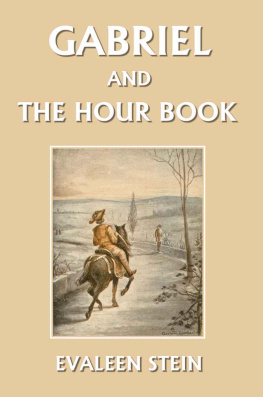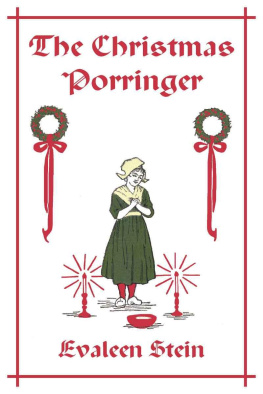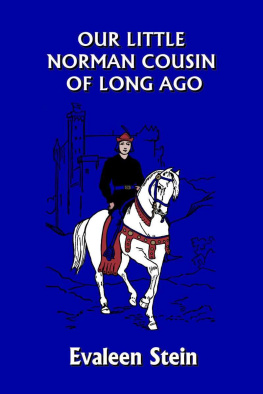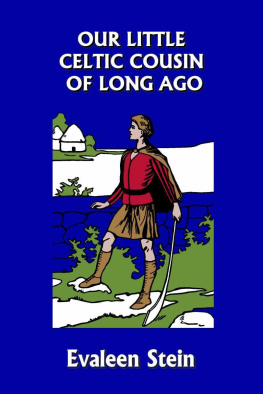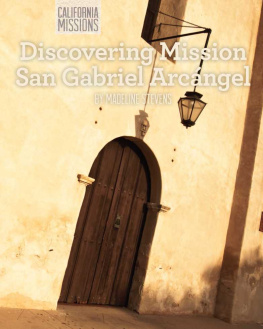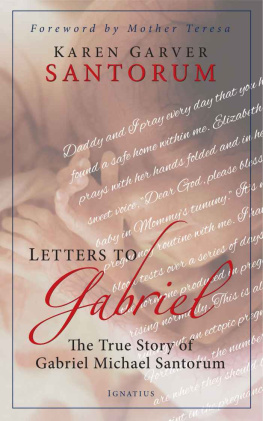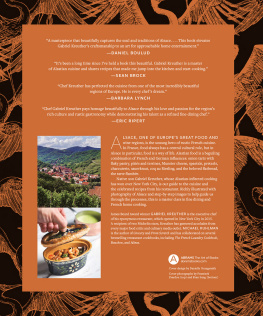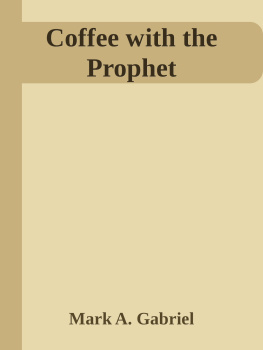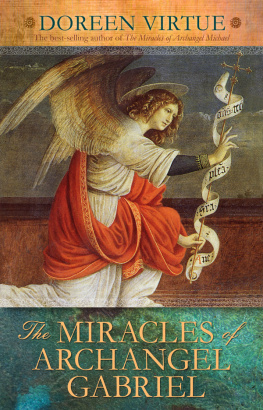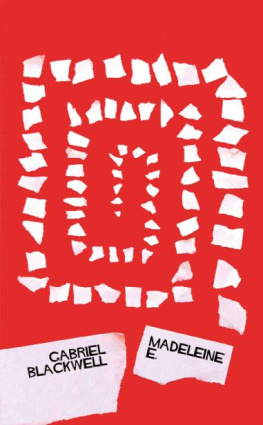Gabriel and the Hour Book
by
Evaleen Stein
Yesterday's Classics
Chapel Hill, North Carolina
Cover and Arrangement 2010 Yesterday's Classics, LLC
All rights reserved. No part of this book may be reproduced or retransmitted in any form or by any means without the written permission of the publisher.
This edition, first published in 2010 by Yesterday's Classics, an imprint of Yesterday's Classics, LLC, is an unabridged republication of the work originally published by L. C. Page & Co. in 1906. This title is available in a print edition (ISBN 978-1-59915-042-0).
Yesterday's Classics, LLC
PO Box 3418
Chapel Hill, NC 27515
Yesterday's Classics
Yesterday's Classics republishes classic books for children from the golden age of children's literature, the era from 1880 to 1920. Many of our titles are offered in high-quality paperback editions, with text cast in modern easy-to-read type for today's readers. The illustrations from the original volumes are included except in those few cases where the quality of the original images is too low to make their reproduction feasible. Unless specified otherwise, color illustrations in the original volumes are rendered in black and white in our print editions.
Contents
The Little Colour Grinder
I T was a bright morning of early April, many hundred years ago; and through all the fields and meadows of Normandy the violets and cuckoo-buds were just beginning to peep through the tender green of the young grass. The rows of tall poplar-trees that everywhere, instead of fences, served to mark off the farms of the country folk, waved in the spring wind like great, pale green plumes; and among their branches the earliest robins and field-fares were gaily singing as a little boy stepped out from a small thatched cottage standing among the fields, and took his way along the highroad.
That Gabriel Viaud was a peasant lad, any one could have told from the blouse of blue homespun, and the wooden shoes which he wore; and that he felt gladness of the April time could easily be known by the happy little song he began to sing to himself, and by the eager delight with which he now and then stooped to pluck a blue violet or to gather a handful of golden cuckoo-buds.
A mile or two behind him, and hidden by a bend in the road, lay the little village of St. Martin-de-Bouchage; while in the soft blue distance ahead of him rose the gray walls of St. Martin's Abbey, whither he was going.
Indeed, for almost a year now the little boy had been trudging every day to the Abbey, where he earned a small sum by waiting upon the good brothers who dwelt there, and who made the beautiful painted books for which the Abbey had become famous. Gabriel could grind and mix their colours for them, and prepare the parchment on which they did their writing, and do many other little things that helped them in their work.
The lad enjoyed his tasks at the Abbey, and, above all, delighted in seeing the beautiful things at which the brothers were always busy; yet, as he now drew near the gateway, he could not help but give a little sigh, for it was so bright and sunny out-of-doors. He smiled, though, as he looked at the gay bunches of blossoms with which he had quite filled his hands, and felt that at least he was taking a bit of the April in with him, as he crossed the threshold and entered a large room.
"Good morrow, Gabriel," called out several voices as he came in, for the lad was a general favorite with the brothers; and Gabriel, respectfully taking off his blue peasant cap, gave a pleasant "good morrow" to each.
The room in which he stood had plain stone walls and a floor of paved stone, and little furniture, except a number of solidly made benches and tables. These were placed beneath a row of high windows, and the tables were covered with writing and painting materials and pieces of parchment; for the brotherhood of St. Martin's was very industrious.
In those days,it was four hundred years ago,printed books were very few, and almost unknown to most people; for printing-presses had been invented only a few years, and so by far the greater number of books in the world were still made by the patient labour of skilful hands; the work usually being done by the monks, of whom there were very many at that time.
These monks, or brothers, as they were often called, lived in monasteries and abbeys, and were men who banded themselves together in brotherhoods, taking solemn vows never to have homes of their own or to mingle in the daily life of others, but to devote their lives to religion; for they believed that they could serve God better by thus shutting themselves off from the world.
And so it came about that the brothers, having more time and more learning than most other people of those days, made it their chief work to preserve and multiply all the books that were worth keeping. These they wrote out on parchment (for paper was very scarce so long ago), and then ornamented the pages with such beautiful painted borders of flowers and birds and saints and angels, and such lovely initial letters, all in bright colours and gold, that to this day large numbers of the beautiful books made by the monks are still kept among the choicest treasures of the museums and great libraries of the world.
And few of all those wonderful old illuminations (for so the painted ornaments were called) were lovelier than the work of the brotherhood of St. Martin's. Gabriel felt very proud even to grind the colours for them. But as he passed over to one of the tables and began to make ready his paint mortar, the monk who had charge of the writing-room called to him, saying:
"Gabriel, do not get out thy work here, for the Abbot hath just ordered that some one must help Brother Stephen, who is alone in the old chapter-house. He hath a special book to make, and his colour-grinder is fallen ill; so go thou at once and take Jacques's place."
So Gabriel left the writing-room and passed down the long corridor that led to the chapter-house. This was a room the brothers had kept for years, as a meeting-place, when they and the Abbot, who governed them all, wished to talk over the affairs of the Abbey; but as it had at last grown too small for them, they had built a new and larger one; and so the old chapter-house was seldom used any more.
Gabriel knew this, and he wondered much why Brother Stephen chose to work there rather than in the regular writing-room with the others. He supposed, however, that, for some reason of his own, Brother Stephen preferred to be alone.
He did not know that the monk, at that moment, was sitting moodily by his work-table, his eyes staring aimlessly ahead of him and his hands dropped idly in his lap. For Brother Stephen was feeling very cross and unhappy and out of sorts with all the world. And this was the reason: poor Brother Stephen had entered the Abbey when a lad scarcely older then Gabriel. He had come of good family, but had been left an orphan with no one to care for him, and for want of another home had been sent to the Abbey, to be trained for the brotherhood; for in those days there were few places where fatherless and motherless children could be taken care of.
As little Jean (for this was his name before he joined the monks, when one's own name was always changed) grew up, he took the solemn vows which bound him to the rules of the brotherhood without realizing what it all would mean to him; for Brother Stephen was a born artist; and, by and by, he began to feel that while life in the Abbey was well for most of the brothers, for him it was not well. He wanted to be free to wander about the world; to paint pictures of many things; and to go from city to city, and see and study the work of the world's great artists.

